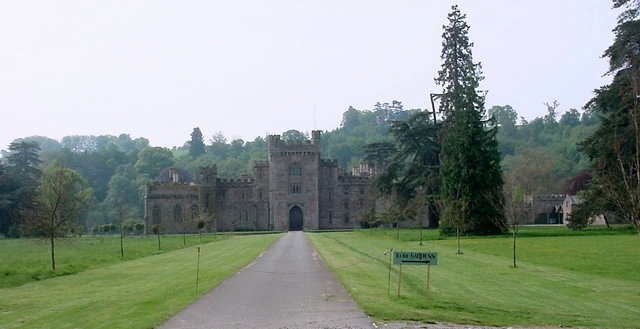Fitzwilliam Coningsby on:
[Wikipedia]
[Google]
[Amazon]
Fitzwilliam Coningsby (died August 1666) was an English politician who sat in the
 In 1621, Coningsby was elected
In 1621, Coningsby was elected
House of Commons
The House of Commons is the name for the elected lower house of the bicameral parliaments of the United Kingdom and Canada. In both of these countries, the Commons holds much more legislative power than the nominally upper house of parliament. T ...
in 1621 and in 1640. He supported the Royalist
A royalist supports a particular monarch as head of state for a particular kingdom, or of a particular dynastic claim. In the abstract, this position is royalism. It is distinct from monarchism, which advocates a monarchical system of governm ...
cause in the English Civil War
The English Civil War (1642–1651) was a series of civil wars and political machinations between Parliamentarians (" Roundheads") and Royalists led by Charles I ("Cavaliers"), mainly over the manner of England's governance and issues of re ...
.
Biography
Coningsby was born at Hampton Court, Herefordshire, the eldest son of the eminent soldier and politician Sir Thomas Coningsby, and his wife Phillipa Fitzwilliam, daughter of Sir William Fitzwilliam of Milton. He was High Steward ofLeominster
Leominster ( ) is a market town in Herefordshire, England, at the confluence of the River Lugg and its tributary the River Kenwater. The town is north of Hereford and south of Ludlow in Shropshire. With a population of 11,700, Leominster i ...
in 1605. He was educated at Hereford Cathedral School
Hereford Cathedral School is an independent, co-educational day and boarding school for pupils of ages 3 to 18 years, from Nursery to Sixth Form. Its headmaster is a member of the Headmasters' and Headmistresses' Conference. The school's premi ...
.
 In 1621, Coningsby was elected
In 1621, Coningsby was elected Member of Parliament
A member of parliament (MP) is the representative in parliament of the people who live in their electoral district. In many countries with bicameral parliaments, this term refers only to members of the lower house since upper house members o ...
for Herefordshire
Herefordshire () is a county in the West Midlands of England, governed by Herefordshire Council. It is bordered by Shropshire to the north, Worcestershire to the east, Gloucestershire to the south-east, and the Welsh counties of Monmouthsh ...
. In 1625 he inherited Hampton Court on the death of his father. He was High Sheriff of Herefordshire
This is a list of Sheriffs and, since 1998, High Sheriffs of Herefordshire
The position of Sheriff is the oldest secular office under the Crown. Formerly the Sheriff was the principal law enforcement officer in each county, but over the centurie ...
in 1626-27 and 1642-43.
In November 1640, Coningsby was elected again as MP for Herefordshire in the Long Parliament
The Long Parliament was an English Parliament which lasted from 1640 until 1660. It followed the fiasco of the Short Parliament, which had convened for only three weeks during the spring of 1640 after an 11-year parliamentary absence. In Septem ...
, but was expelled in 1641 for being a monopolist
A monopoly (from Greek el, μόνος, mónos, single, alone, label=none and el, πωλεῖν, pōleîn, to sell, label=none), as described by Irving Fisher, is a market with the "absence of competition", creating a situation where a speci ...
, He was one of the "Nine Worthies" - nine justices who formed the royalist leadership in Herefordshire in the summer of 1642. The others were Sir William Croft, Wallop Brabazon, Thomas Wigmore of Shobden, Thomas Price of Wisterdon, William Smallman, Henry Lingen, William Rudhall and John Scudamore.
Coningsby was Governor of Hereford when it briefly fell to William Waller
Sir William Waller JP (c. 159719 September 1668) was an English soldier and politician, who commanded Parliamentarian armies during the First English Civil War, before relinquishing his commission under the 1645 Self-denying Ordinance.
...
in early 1643. He was replaced as commander of the city by Barnabas Scudamore who commanded it during the 1645 siege by Scottish Covenanter forces. He fought for the King throughout the Civil War until in 1646 he was found at the Siege of Worcester protesting against the surrender of the city by the Royalist commander. Coningsby then went into exile and suffered heavily in the sequestration of his estates, his wife Cecily and his children being reduced to comparative poverty. His petitions and those of his wife and of his sons, with the counter-petitions of his tenants and of Sir Thomas Allen, to whom the bulk of his estates had been granted, occupy six pages (2064–71) of the Calendar of the Committee for Compounding. In 1653 he was still desperately pleading "the starving condition" of himself and his family. At the Restoration of Charles II Coningsby recovered his estates.
Coningsby died in 1666 and was buried on 23 August 1666 at Hope under Dinmore, Herefordshire,
Family
Coningsby married Cecily Nevill, daughter of Henry Nevill, 9th Baron Bergavenny and his first wife Lady Mary Sackville, on 12 July 1617 at St. Alphage, London. She was considered one of the beauties of the Jacobean court, and was painted several times, notably by John Hoskins. They had five children: Cecilia, Philippa, Humphrey, Thomas and Henry.Humphrey Coningsby
Humphrey Coningsby (born ca. 1623) was an English politician who sat in the House of Commons from 1641 to 1644. He supported the Royalist side in the English Civil War.
Coningsby was the eldest son of Fitzwilliam Conningsby, of Hampton Court, ...
replaced his father in the Long Parliament and was the father of Thomas Coningsby, 1st Earl Coningsby
References
{{DEFAULTSORT:Coningsby, Fitzwilliam 1666 deaths High Sheriffs of Herefordshire Cavaliers English MPs 1621–1622 English MPs 1640–1648